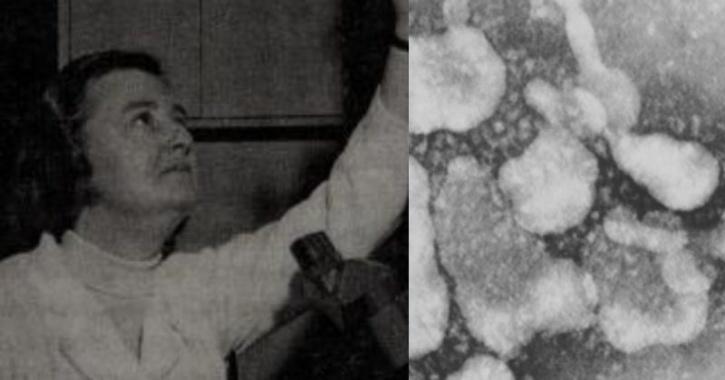
Through the darkness of the COVID-19 pandemic, (s)heroic stories still shine—like that of June Almeida, who first discovered coronaviruses in 1964.
However, as is the fate of many women pioneers throughout history, her uterus, combined with a lack of formal schooling, rendered her unappreciated and overlooked. Today, she graces headlines of BBC, National Geographic, Miami Herald, India Times, The Irish Times, Glasgow Times and more.
Born October 5, 1930, in Glasgow, Scotland, Almeida was raised in a tenement building and dropped out of school at sixteen. She began what would become a stunning virology career at the Glasgow Royal Infirmary. Next, it was St. Bartholomew’s Hospital in London.
Upon immigrating to Canada with her husband, Almeida began work as an electron microscopy technician at the Ontario Cancer Institute in Toronto. There, she was recruited by Professor A. P. Waterson to return to London and continue her work at St. Thomas’s Hospital Medical School.
Dr. David Tyrrell of the Common Cold Unit approached Almeida for help identifying the illness of a child. Never one to disappoint, Almeida pictured the virus, remembered viewing similar viruses in previous work and identified a new strain. Almeida actually discovered coronavirus long before 1964—but her attempt to publish was turned down “because the referees said the images she produced were just bad pictures of influenza virus particles.”
Almeida’s images displayed the circle surrounded by spikes—an image we now see in the news daily. They decided to name the new strain corona, Latin for crown. These new findings were subsequently published in the Journal of General Virology, with Almeida as the lead author.
Immune electron microscopy, which Almeida developed, is what allowed the imaging of coronavirus. She identified other numerous viruses, including rubella and the human immunodeficiency virus (HIV). She also discovered there are two components of hepatitis B with this technique. She taught other scientists as well, who went on to identify viruses themselves. Throughout her career, she published her findings numerous times and was rewarded with a Doctor of Science degree.
Almeida also spent time at the Royal Postgraduate Medical School in London and Wellcome Institute, where her name found its way onto plenty of patents.
In her retirement, Almeida became a yoga instructor and completed china restoration. But, her passion for science remained strong: she began virology work as an advisor at St. Thomas’ and yet again published new research.
The coronavirus pandemic and the response by federal, state and local authorities is fast-moving. During this time, Ms. is keeping a focus on aspects of the crisis—especially as it impacts women and their families—often not reported by mainstream media. If you found this article helpful, please consider supporting our independent reporting and truth-telling for as little as $5 per month.





